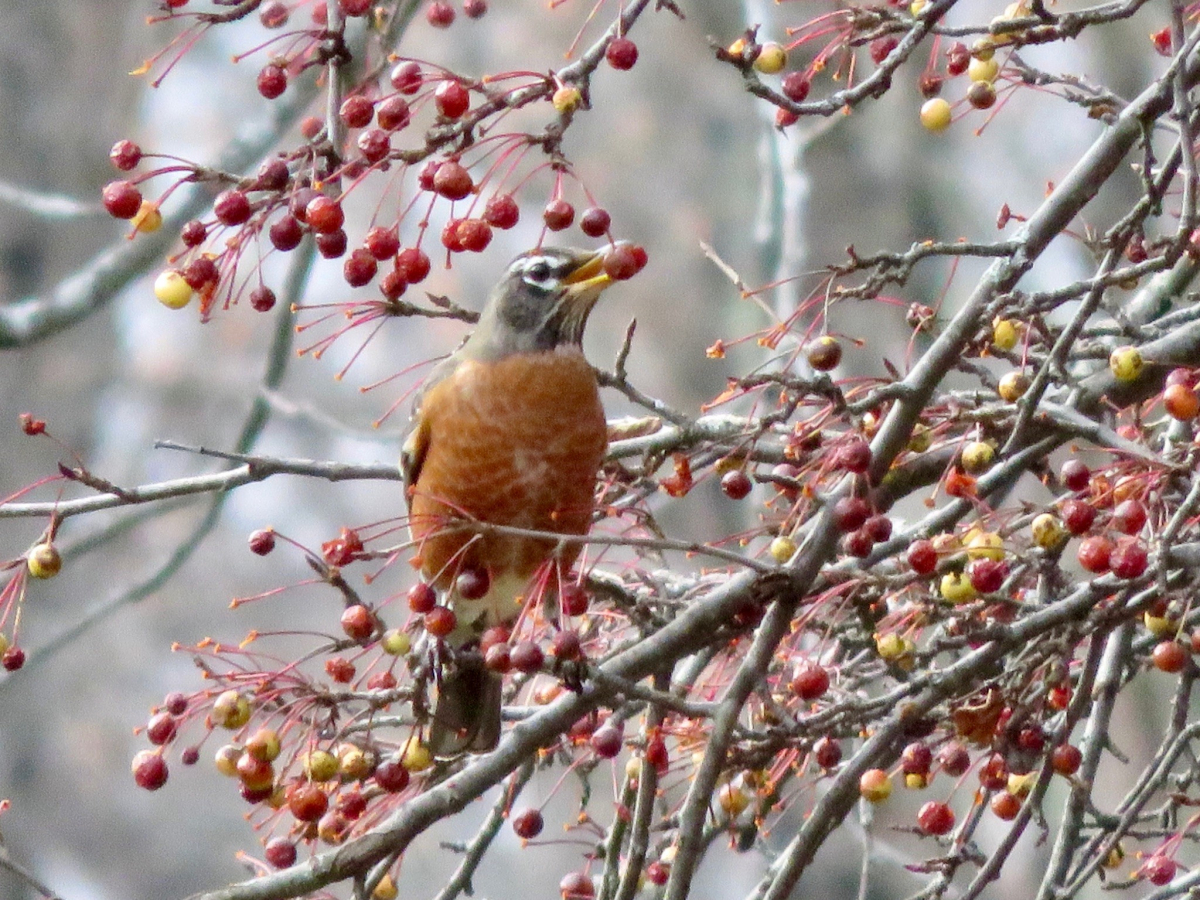On Tuesday afternoon, a large flock of American robins visited the Ames Free Library to feed in the Siberian crabapple near Queset House.

Yes, robins can be seen in Massachusetts during the fall and winter months, though they are probably not the same birds that nest in your yard. According to Mass Audubon, “It’s likely that robins wintering in Massachusetts migrate here from northern New England or Canada. Most of the robins that breed in Massachusetts migrate to the southern states with the onset of cold weather in the fall.” What motivates both groups is the search for food.
During the spring and summer, robins prey heavily on earthworms and insects. [Yet another reason to value and protect the insects in your yard!] When cold weather arrives, robins in Massachusetts shift to an abundant and well-preserved food source, the berries that cling to shrubs and trees such as dogwood, sumac, red cedar, hawthorne, American holly, chokeberry, and some varieties of crabapple. Such fruit may account for 60 percent of the bird’s year-round diet (See the National Audubon Society’s “Guide to North American Birds”).
This shift in diet partly accounts for our perception that robins “disappear” during winter. At this time of year, they don't feed on our lawns, nor do they visit our feeder stations, for they rarely eat seeds. As we’ve discussed in previous posts, the human idea of “bird food” doesn’t cover all the bases. Unless our properties support fruiting shrubs and trees, robins will go elsewhere for a meal.
Other behavioral changes reduce our proximity to robins during winter. During nesting season, we are seeing birds who are territorial: all aspects of their daily lives are playing out in front of us. We hear songs intended to attract a mate and calls that ward off competitors and threats. With luck, we can witness nest building and efforts to feed the chicks. Most of these behaviors are unnecessary after breeding season, at which point, robins leave their territory and form flocks for roosting and feeding. What we perceive as “home” is just one stage in their annual life cycle. As the website Journey North phrases it, winter robins “follow the food.” They are nomadic, moving whenever a food source becomes depleted.
Like many of us, American robins will eat their favorite foods first. By late winter, the less-appealing options must suffice. The robins near Queset House seemed to relish their crabapple dinner. Then again, it was cold, and fruit provides urgently needed calories.
-------------------------------------------------------
Now, it’s your turn. This weekend, observe the birds feeding in your yard -- at feeders, on ornamental plantings, and on native vegetation. Email a list of the five birds most commonly feeding at your site to info@amesfreelibrary.org. Your list will be forwarded to me. Include your name, the top five bird species, and, if you are more ambitious, the types of food they were eating. Photos are always welcome.
It will be interesting to compare your observations. Responses received by Wednesday, December 8 can be included in next week’s post.